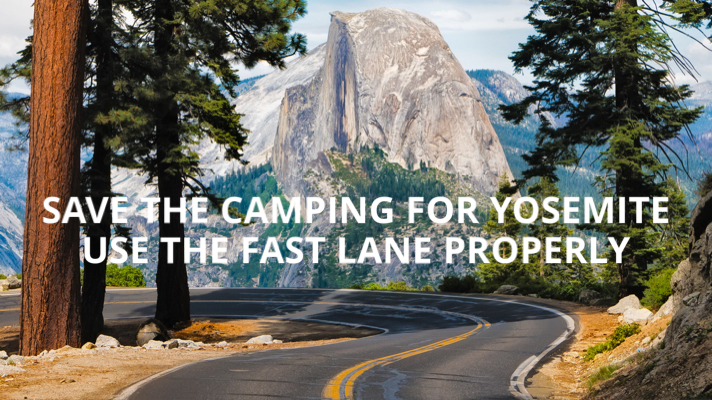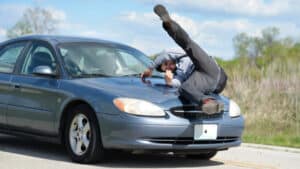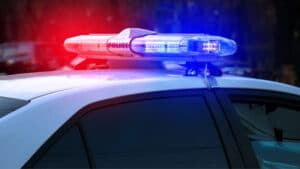Written By: Chris Dolan and Jeremy Jessup
This week’s question comes from Jaxson from San Mateo, CA, who asks: I recently heard that changing lanes causes 70% of all motor vehicle collisions. Some of that is related to vehicles traveling slowly in the fast lane. That number seems high, and I do not see how a vehicle traveling at or below the speed limit can cause so many collisions. It is frustrating to come upon slow-moving vehicles, but are they really that dangerous?
Dear Jaxson,
You are correct that the need to change lanes is a significant portion of traffic collisions, approximately 33%. Slow-moving vehicles occupying the number one lane (express lane, fast lane, or carpool lane) are a significant contributing factor. However, additional concerns exist with drivers “camping” in the fast lane.
Most freeway accidents occur in the fast lane, likely because motorists in this lane don’t consistently travel at the same speed. Research has shown that camping in the left lane creates artificial, unexpected speed differentials, which cause just as many accidents. Despite its intended use as a passing lane, it is not uncommon for a driver going 75 mph to suddenly brake for someone cutting into the lane at a speed 20 mph slower. The number of accidents increases with the frequency of lane changes, a factor that amplifies when a slower driver cruises in the left lane.
California Highway Patrol officials have asserted that most traffic accidents occur during lane changes and that aggressive, erratic behavior heightens the risk of causing an accident.
Another factor is the limited escape routes to avoid accidents. While the middle lane offers a lane on either side, and the right lane provides the middle lane and the shoulder, the fast lane leaves the option of moving into the middle lane or hitting a median. In rush hour traffic, the absence of a middle lane may lead many drivers to accidents. While many drivers in the fast lane travel 10 to 15 mph faster, some barely reach the speed limit.
Another significant issue associated with camping in the fast lane is the prevalence of aggressive driving caused by cars traveling slowly in the left lane. A driver attempting to pass a vehicle using the left lane may engage in erratic, zig-zagging driving patterns when encountering a slower-moving driver in the left lane, increasing the chances of causing an accident. This aggressive driving can lead to cutting off other motorists, potentially resulting in road rage and more collisions.
Camping in the fast lane increases the chance of a collision occurring and leads to traffic congestion. A study conducted at Temple University, focusing on left-lane travel and traffic jams, determined that driving below the speed limit in the far-left lane on highways impedes traffic flow. The far-left lane serves as the passing lane for fast drivers maneuvering around slower ones. Failure to use the far-left lane as a passing lane results in traffic backups and further escalates the risk of accidents due to a larger volume of vehicles behind the slow-moving one.
Driving too slowly in the left lane is dangerous and illegal in California. While the maximum speed limit on most highways is 65 miles per hour, moving slower than other traffic and causing a traffic backup can result in a ticket for “impeding the flow of traffic.” According to California Vehicle Code Section 21654,
“If a vehicle is being driven at a speed less than the normal speed of traffic moving in the same direction and is not being driven in the right-hand lane for traffic, it shall constitute prima facie evidence that the driver is operating the vehicle in violation.”
The fast lanes are different from people movers at the airports that move vehicles faster; the driver has the responsibility of a leader to ensure they’re traveling faster than those on the right. Once that ceases to be the case, one must stop camping and move over.
Disclaimer: Each situation is different, and this column does not constitute legal advice. We recommend consulting with an experienced trial attorney to understand your rights fully.










